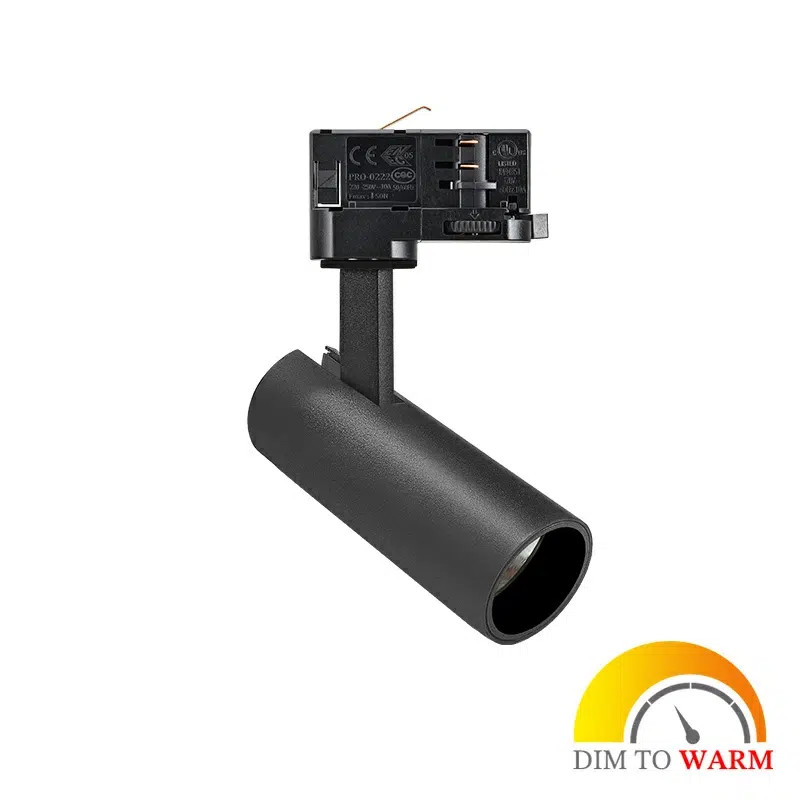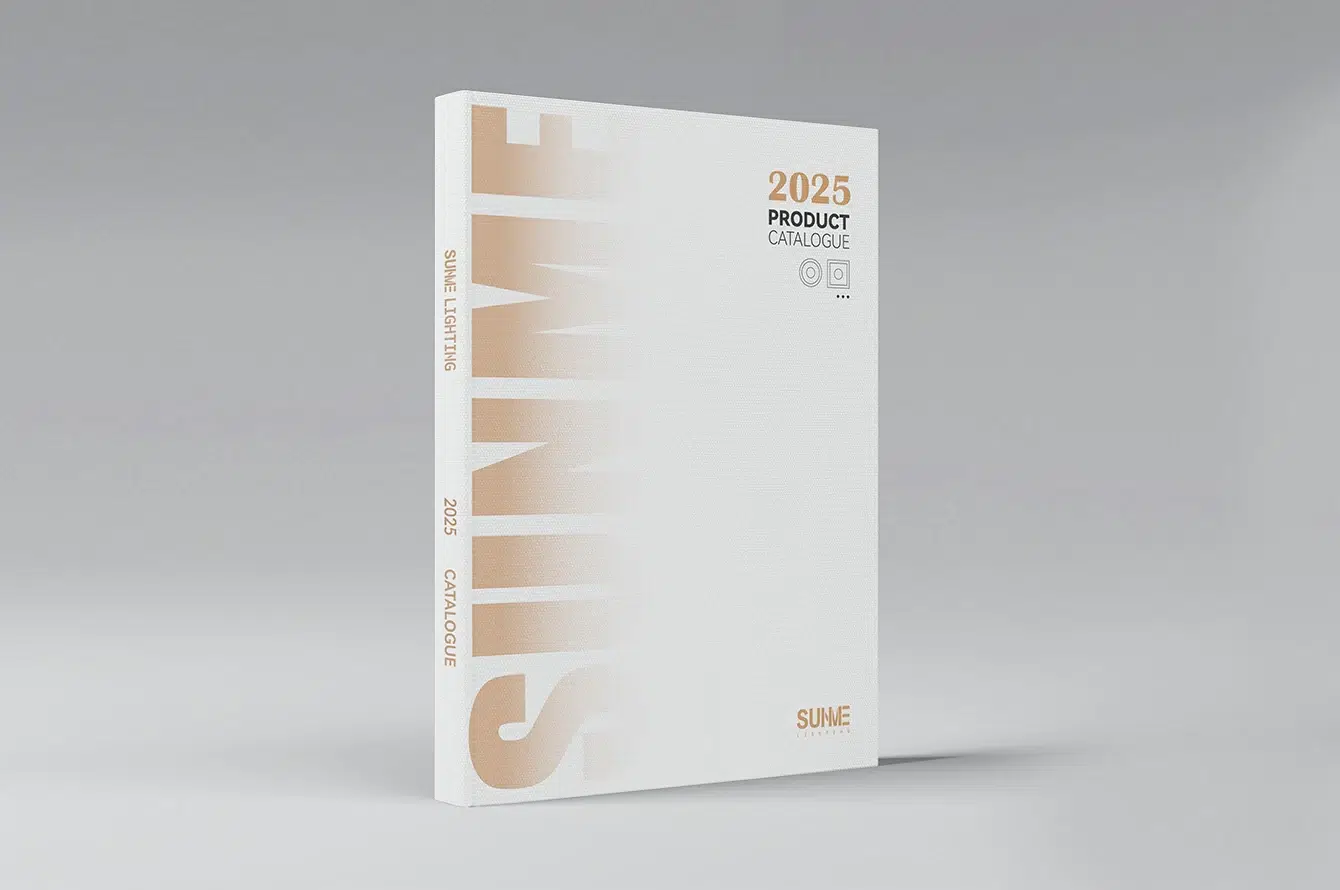Dim To Warm Lighting
We believe spaces should inspire. That is why SUNME focuses on creating lighting solutions that blend comfort, more useful, and seamless living—powered by breakthroughs like Dim To Warm.
Dim To Warm Technology
Dim To Warm is also known as Warm Dim or D2W or DTW, Dim to warm technology describes how the light’s color temperature shifts as it dims. The lower the brightness, the warmer (more orange-ish) the light becomes. This mimics natural lighting behavior, similar to how sunlight transitions into sunset hues, creating a soothing ambiance that prepares us for nighttime.


Even in the same room, you often have different needs. You might be concentrating on studying or working intently, or you might be having dinner with your family. The Dim to Warm technology enables you to flexibly adjust different lighting effects.
By changing the color of the light, the atmosphere of the space can be adjusted, allowing you to feel comfortable lighting while not reducing the color reproduction of the space's items. The light CCT usually ranges from 1800K-3000K or 2000K-3000K. It gradually changes from the bright 3000K to the warm and comfortable 1800K. The light affects your emotions.

You can adjust the brightness of the lamps to precisely match the light requirements of different scenarios. In scenes with high brightness demands during the day, to provide sufficient lighting, the color temperature of the lamps changes very little. When the lamp brightness is reduced to below 50% at night, the color temperature of the lamps changes significantly. By slightly varying the brightness to adjust the color temperature of the light, warm light colors can create a warm and comfortable night atmosphere.
Don’t have a business email? Click here!
Dim To Warm Light For Different Applications

Shop lighting application
Shop lighting, such as in restaurants, coffee shops, and bakeries, needs to provide customers with a comfortable dining environment. It should not only meet the high brightness requirements during the day but also use warm light to create a warm and comfortable dining atmosphere at night. We recommend you use a color temperature range of 1800-3000K.
SUNME recommends the following Dim To Warm spot light for you.
Don’t have a business email? Click here!
Hotel lighting application
Shop lighting, such as in restaurants, coffee shops, and bakeries, needs to provide customers with a comfortable dining environment. It should not only meet the high brightness requirements during the day but also use warm light to create a warm and comfortable dining atmosphere at night. We recommend you use a color temperature range of 1800-3000K.
SUNME recommends the following Dim To Warm spot light for you.
Don’t have a business email? Click here!


Home lighting application
When you return home after a long and tiring day of work, the warm light creates a relaxing and enjoyable atmosphere at home, which is beneficial for you to relieve physical and mental fatigue. We recommend that you use a light color of 1800K or 2000K.
SUNME recommends the following Warm Dim modular downlight for you.
Don’t have a business email? Click here!
Bar lighting application
A great bar is not just about drinks—it is about atmosphere. Warm Dim lighting lets you shift moods effortlessly, from the bright energy of happy hour to the intimate glow of late-night cocktails.
SUNME recommends the following 2000K-3000K lighting solutions for you.
Don’t have a business email? Click here!

Why choose SUNME Dim To Warm light
SUNME Lighting is a professional commercial lighting manufacturer in China, with more than 15 years of experience in lighting product research and development. Over the years, we have insisted on independent product research and development, and have a number of product patents.
Most of SUNME Lighting's main products have materials in stock to meet different order lead times. At the same time, all of our products have no MOQ requirements.
To learn more about SUNME's Warm dim light, please contact us or request a quote.


How does Dim to Warm work?
How Traditional Bulbs Achieve Warm Dimming?
In incandescent and halogen bulbs, dimming naturally creates warmer light. Here’s why:
- The bulb’s filament cools down as power is reduced, lowering its temperature.
- This shifts the light spectrum from bright white (~2700K) to a golden-red hue (~2000K)—similar to candlelight.
- The effect is organic but inefficient, as most energy is wasted as heat rather than light.
How LEDs Replicate This Effect?
Since LEDs have no filament, engineers had to innovate. Modern Dim-to-Warm LEDs use a smart mix of diodes to mimic the same natural warmth:
- Multi-Chip Design – The LED contains:
Cooler white diodes (neutral/warm white, e.g., 2700K-3000K)
Red/amber diodes (for warm tones)
- Dynamic Dimming Process
At full brightness, the white diodes dominate for clear, bright light.
As you dim, the cooler diodes fade first, while the red/amber ones stay strong or even intensify.
By low brightness (~10%), mostly the warm diodes remain, creating a deep amber glow (≈2000K).
- Color Mixing Magic
The blend of cool and warm diodes at different dimming levels precisely mimics the gradual warmth of old bulbs.
Why It Matters?
- No more "cold dimming" – Standard LEDs stay bluish when dimmed, clashing with cozy settings.
- Energy-efficient nostalgia – You get the comfort of incandescent lighting with LED efficiency.
- Perfect for mood lighting – Restaurants, bars, and homes use it to transition from day to night ambiance.
The Art of Atmosphere: Why Dim-to-Warm Lighting is Essential
The Science of Comfort
Dim-to-warm lighting isn’t just about aesthetics—it’s about human-centric design. Our brains associate warm, low-CCT light (around 1800K or 2000K) with sunset, firelight, and candlelit relaxation. This triggers a natural wind-down response, making spaces feel instantly cozier.
Biological Benefits:
- Reduces evening eye strain vs. harsh blue-toned LEDs
- Supports melatonin production for better sleep preparation
- Creates psychological warmth—especially valuable in winter
Best of Both Worlds
- Why choose between energy efficiency and ambiance? Dim-to-warm LEDs deliver:
✔ 80-90% energy savings vs. incandescent/halogen
✔ 50,000+ hour lifespans (vs. 1,000-2,000 hours for traditional bulbs)
✔ Instant nostalgia – the same golden glow you love, without the inefficiency
Where It Shines
- Residential Must-Haves:
Living rooms: Shift from bright for chores → amber for movie nights
Bedrooms: Mimic sunset’s natural progression for sleep-friendly lighting
Dining areas: Replicate candlelit intimacy at the dimmest settings
- Commercial Magic:
Hotels: Make lobbies feel like a fireside lounge after dark
Restaurants: Transition from lunchtime vibrancy to dinner’s romance
Spas/wellness: Enhance relaxation with light that “breathes” like sunset
Pro Tip: CRI Matters
- Always choose dim-to-warm LEDs with CRI ≥90 to ensure:
Skin tones look natural (not jaundiced)
Wood textures and fabrics appear true-to-life
Food/drinks maintain appetizing colors
Dim-to-Warm vs. Tunable White: Key Differences & Applications
Core Technology
| Dim-to-Warm (DTW) | Tunable White (TW) |
| Color temperature automatically warms as brightness decreases (e.g., 3000K → 2000K) | Color temperature can be manually adjusted independently of brightness (e.g., 2700K → 6500K) |
| Mimics incandescent/halogen behavior | Mimics natural daylight progression |
| Fixed warm-white spectrum (no cool tones) | Covers full white spectrum (warm → cool) |
How They Work
Dim-to-Warm:
- Uses dual LED chips (warm white + red/amber) blended during dimming.
- Example: A restaurant dims lights for dinner—bright 3000K at 100% fades to candlelight 2000K at 10%.
Tunable White:
- Uses two adjustable white LEDs (warm white + cool white) mixed at varying ratios.
- Example: An office shifts from energizing 5000K at noon to relaxing 2700K in the evening.
Key Benefits
| Dim-to-Warm | Tunable White |
| ✅ Simpler, cost-effective | ✅ Full circadian lighting control |
| ✅ Ideal for mood lighting (homes, hospitality) | ✅ Optimized for productivity (offices, healthcare) |
| ✅ Plug-and-play with standard dimmers | ✅ Requires smart controls (DALI, 0-10V, app) |
When to Choose Which?
- Pick Dim-to-Warm if you want:
A cozy, automatic warm glow when dimming (e.g., bedrooms, bars, boutique hotels).
Compatibility with existing TRIAC dimmers.
- Pick Tunable White if you need:
24/7 bio-adaptive lighting (e.g., schools, hospitals, open-plan offices).
Manual control over both brightness and color temperature.
Pro Tip: Hybrid Solutions
Daytime: Tunable White for task lighting.
Evening: Auto-switches to Dim-to-Warm mode for ambiance.













